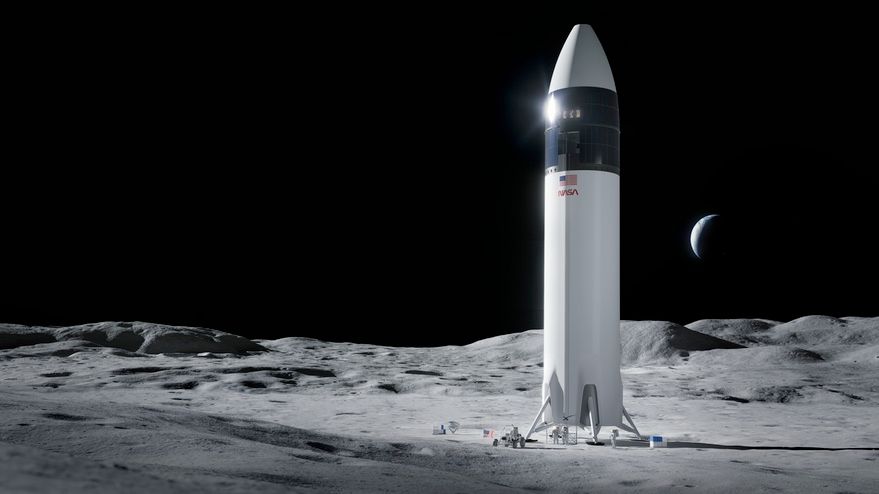The city of Jerusalem played host city to the International Astronautical Congress 2015 (IAC 2015). Due to concerns about security, attendance was about 30% down on usual years, although with over 2,000 participants attending from 58 different countries the Congress remains the preeminent space conference for the World’s space agencies.
Apart from public discussions between the parties, private meetings often take place in which international bi-lateral and multi-lateral agreements are started or finalised. For example, during the Congress, NASA and the Israeli Space Agency (ISA) announced a cooperative agreement on educational and technology exchanges, while ESA and Roscosmos decided to cooperate on a landing mission (Luna 27) to the Lunar South Pole. In addition to these pow-wows, the technical lectures expound on on the cutting edge of space technology and policy, ranging from astrodynamics to methods of landing mankind on Mars.
Congress venue, exhibition and entertainments
IAC 2015 had the (sometimes maze-like) Jerusalem International Convention Center (ICC) as its venue. Thanks to the signs and helpers, most delegates could find their way around. There were plenty of notice boards but more tables should have been set aside for leaflets – a few of the coffee tables were soon heaving with paperwork. The toilets were clean and the food outlets were acceptable, if expensive. Overall the venue was slightly too small. Some conference technical strands had to take place in ballrooms in the basement of the nearby Crowne Plaza Hotel – a five-minute walk way.
Security was tight at the main Congress entrance, with entry via a metal detector. However, many soon found an upper door which, while still guarded, did not have the hassle of having to go through this detector.
As is traditional, the first day begins with a colourful opening ceremony involving dignitaries, singers and dancers. The agenda included a forum of space agency heads with press conferences and private meetings following that. The day ended with the traditional welcome gala, with lots of good food and drink – albeit after enduring interminable queues.
Other paid-for “fun night” events were laid on for later in the week, although most were poor value. For example, one cost the equivalent of €65 to visit the famous Mahane Yehuda street market when, in reality, it was only a free ten-minute walk, or a thirty Shekel (€7) five-minute taxi ride away. The paid-for final Gala night at least seemed better value at €80 as it included an Arabic-style dinner and belly dancing girls (this writer was not actually able to attend).
The Congress organisers also laid on paid-for trips either to the main historic sites of Israel or to Israeli space firms, although one would have thought the latter should have been free. This writer felt much safer going around Old Jerusalem on his Ben Harim organised tour. The second half of this trip took him to the small church over the reputed birthplace of Jesus Christ at Bethlehem. It was really quite sweet and moving. Others took bus trips to swim/float in the Dead Sea or visit the Masada fort, famous as the site of a Jewish rebellion against the Romans.
The Congress exhibition area was spaced out over several rooms, with main conference sponsor Lockheed Martin and the Israeli firms IAI and Rafael having an especially good showing. Apart from not enough US space firms, the only thing obviously missing was a really good set of rocket models. Only the Italian Space Agency (ASI) appeared to have one which appear to be the new Vega C.
There were, of course, the usual parties and booze-ups at national groups of stands. The German DLR’s stand soon had something to celebrate when the city of Bremen was selected as host city for IAC 2018, beating competition from Austria and Paraguay. Guadalajara in Mexico has already been selected for next year’s venue with Australia’s Adelaide set for 2017.
The Mexican Space Agency had a special reception and dinner, with a sound and vision show that even eclipsed the opening ceremony. However, such was the demand that they soon ran out of tables and chairs as attendance was much higher than expected given the hostile conditions outside.
There was a last minute rethink over the proposed admission of North Korea (DPRK) into the International Astronautical Federation given that its space programme is thought to be primarily military.Similarly, a vote for the next president of the International Astronautical Federation was also controversial. It was won by the unopposed Jean-Yves Le Gall, former head of Arianespace and current head of the French Space Agency CNES. In what was seen by some as a “stitch up”, the popular former head of ESA, Jean-Jacques Dordain, withdrew his candidacy after ESA withdrew its support for him with concerns about his age being the alleged cause.
Heads of Space Agencies Plenary and Press Conference: whether Moon or Mars – cooperation needs backing of governments
The Congress should be the one place where the heads of agencies can meet without fear or favour. Recent Congresses have been marred by delegations from China or Russia not being allowed into the host country. While this year all the “majors” attended, including NASA, China, Russia, ESA and India, the heads of some of these had their hands tied by their governments’ policy decisions back home. For example, while NASA’s Administrator Charles Bolden is personally in favour of stronger international cooperation with China, he can do nothing as long as the US Congress bars it.
China talks of wanting to take part in international efforts such as the space station, but in reality is happy to go its own way. It showed off a design for a mini-international space station all of its own. Having said that, there were signals from Xu Dazhen, Administrator of the China National Space Administration (CNSA) that China might be in favour of cooperating on a universal docking system which could greatly help in-orbit rescue. However, this signal was probably too late for some spacecraft designs. NASA’s new Orion exploration craft has a non-standard port on it and would probably not be able to carry anything else given its weight limits.
With respect to longer range space exploration, ESA head Jan Woerner said Europe’s unmanned EXOMARS mission was due to launch next year, although he continued to promote the concept of a human lunar base/village on the Moon. Bolden was cooler on the prospect, noting that operations in Cis-Lunar space were being planned, if not any actual manned landings.
Good progress was being made on the very large SLS rocket, which is being built to carry NASA’s manned Orion spacecraft. Test firings of its stage engines were already taking place though, in a later press conference, he resisted the idea that his nation was in a race back to the Moon with Russia or China. NASA’s sights remain set on landing mankind on Mars, and it does not want any distractions or financial drains (e.g. from a Moon base project) to prevent this. ESA hopes the ISS will be extended, as does fellow ISS partner Japan. The president of JAXA, Naoki Okumura, specifically mentioned his support for the ISS.
Many of the space agency heads noted that they were looking to new launch vehicles, with Russia’s Roscosmos head Igor Komarov planning Angara A5 flights, China’s Xu Danzehn looking forward to the Long March-5 and Okumorua planning JAXA’s first flight of the H-3 in 2020. China is also planning a soft-landing mission on the planet Mars in 2020, but is not neglecting the Moon either with a Chang’e 4 lunar rover mission to the far side in 2018.
India at least had the record of the PSLV to crow about which has now strung together 30 launches without a failure. Meanwhile, as chairman of the relative minnow, the Israeli Space Agency, Isaac Ben Israel noted that his country preferred to concentrate on smaller communications satellites.
The holy and long fought over city of Jerusalem
The city of Jerusalem has a history going back thousands of years and is venerated by three different world religions: Christianity, Islam and Judaism. The city has a very healthy tourism industry as a result, as Christians wish to visit the Via Dolorosa and the Church of the Holy Sepulchre, where Christ was said to be crucified and buried. Jews wish to visit the Wailing Wall – the remaining side of its original temples. Meanwhile Moslems head for the Al-Aqsa Mosque and the Dome of the Rock.
For centuries this city has been fought over, most recently in 1967 when East Jerusalem was captured from Jordan by Israel. Unfortunately, displaced and neglected indigenous Palestinians still resent even the existence of Israel. The state only came into being in the modern era under a UN ruling in 1948, following the Holocaust perpetrated by the Nazi Germany during the Second World War.
As hatred and tit-for-tat violence has escalated between Israelis and Palestinians, the Holy City of Jerusalem has ended up looking like an armed camp. Soldiers and civilians walk around, even when pushing baby-carrying prams, with assault rifles or machine guns strapped to their backs.
Tension and fear at the Congress
The most serious outbreaks of violence, barring war, in the modern era, were the two Palestinian Intifada insurrections in the 1990s and 2000s. These directly challenged Jewish rule over Palestinian majority areas. While partially successful in bringing about at least a measure of home rule for Palestinians, their counterproductive effect was to result in hundreds of thousands of Palestinians losing their jobs as they were barred from working in Israel. This economic disaster is thought to be the underlying cause of the most recent outbreak of violence by underemployed Palestinian young men, who have perpetrated murders of individual Jewish soldiers and civilians by stabbing them.
There is, however, swift Israeli justice and revenge meted out. A few of the recent murders by Palestinians and “summary justice” Israeli machine gun shootings in Jerusalem were actually witnessed by some Congress attendees. As a result attendees were advised not to enter the old city.
At the opening ceremony, in a surprisingly political speech, Israel’s science minister, Ofir Akunis, branded the Palestinian attacks as acts of “terrorism” conveniently forgetting that some of Israel’s founding fathers mounted similar attacks on the British during the 1940s. One man’s “terrorist” is another man’s “freedom fighter” you could say.
Nevertheless, most recognise the horrible murder of an innocent person when it happens. The final straw for many was the murder by stabbing of a 70-year-old Israeli woman on a bus just 200m away from the Congress and her alleged killer’s subsequent immediate “execution” by shooting, which, for a time, caused Congress participants to be “locked in” for their own safety. These random acts of violence prompted the governments of some nations (Italy, Japan) to recommend that their delegations withdraw from Jerusalem. Thankfully, only the last two days of the conference were significantly affected and most of the main business had been done.
Conclusion: ‘Wartime conditions’ but space business is done
Overall the Congress can be regarded as successful – albeit held under “wartime-like” conditions and cut short for many. While most conference business was completed, Jerusalem’s already shaky reputation as a conference venue was further weakened, with trickle-down economic and social repercussions to the city as a result. Whatever the other political and economic trends affecting the region, until Palestinians accept Israel’s right to exist, and until Israelis treat Palestinians as they would be treated themselves, then both these peoples and their holy city will be the losers.
One final thing. There was a separate Space Generation Congress on the other side of the city and, while there was some crossover, it is a shame that they could not have participated more in the actual IAC. Let’s face it, it is more likely to be one of them that sets foot on Mars than one of IAC’s old-timers.





